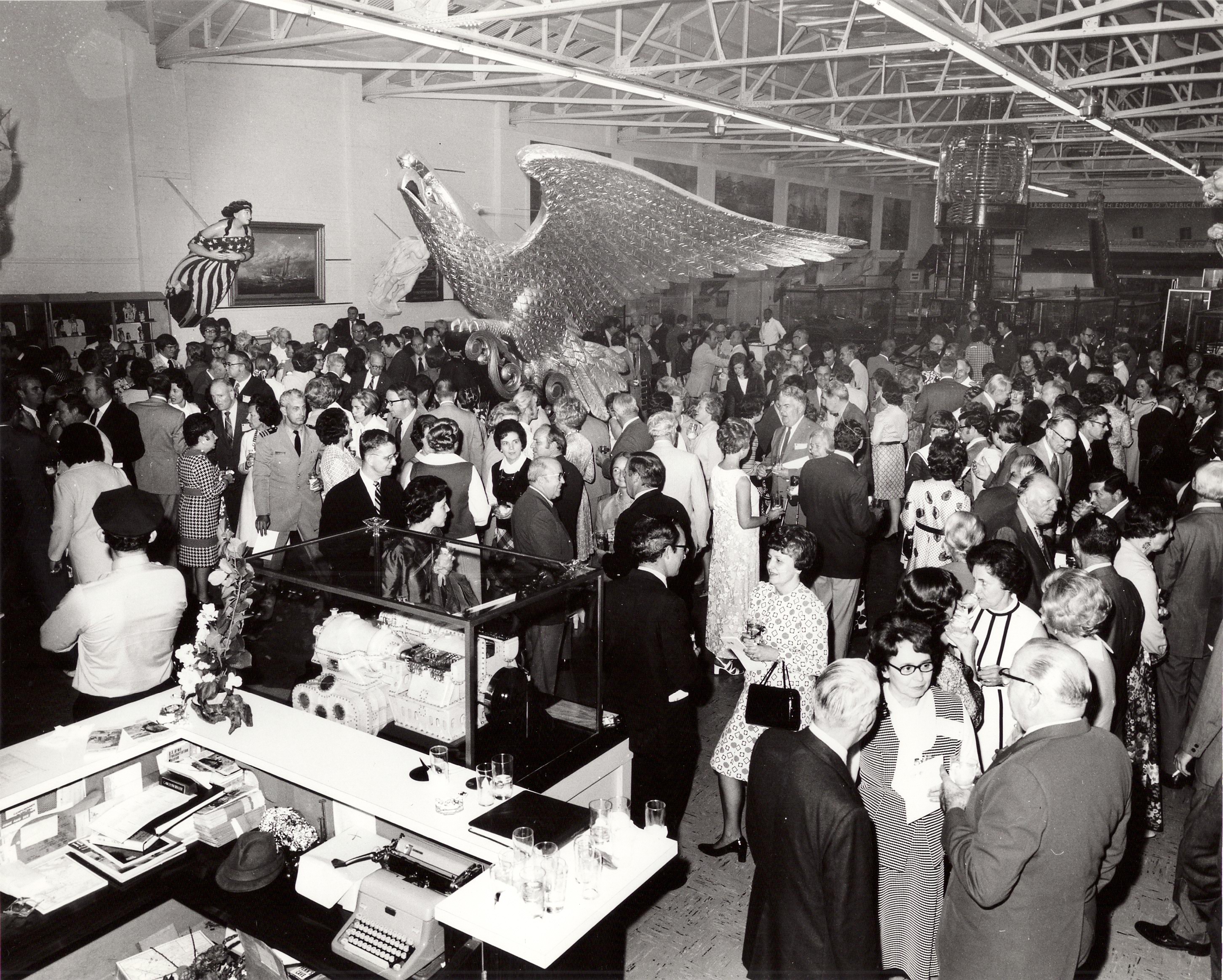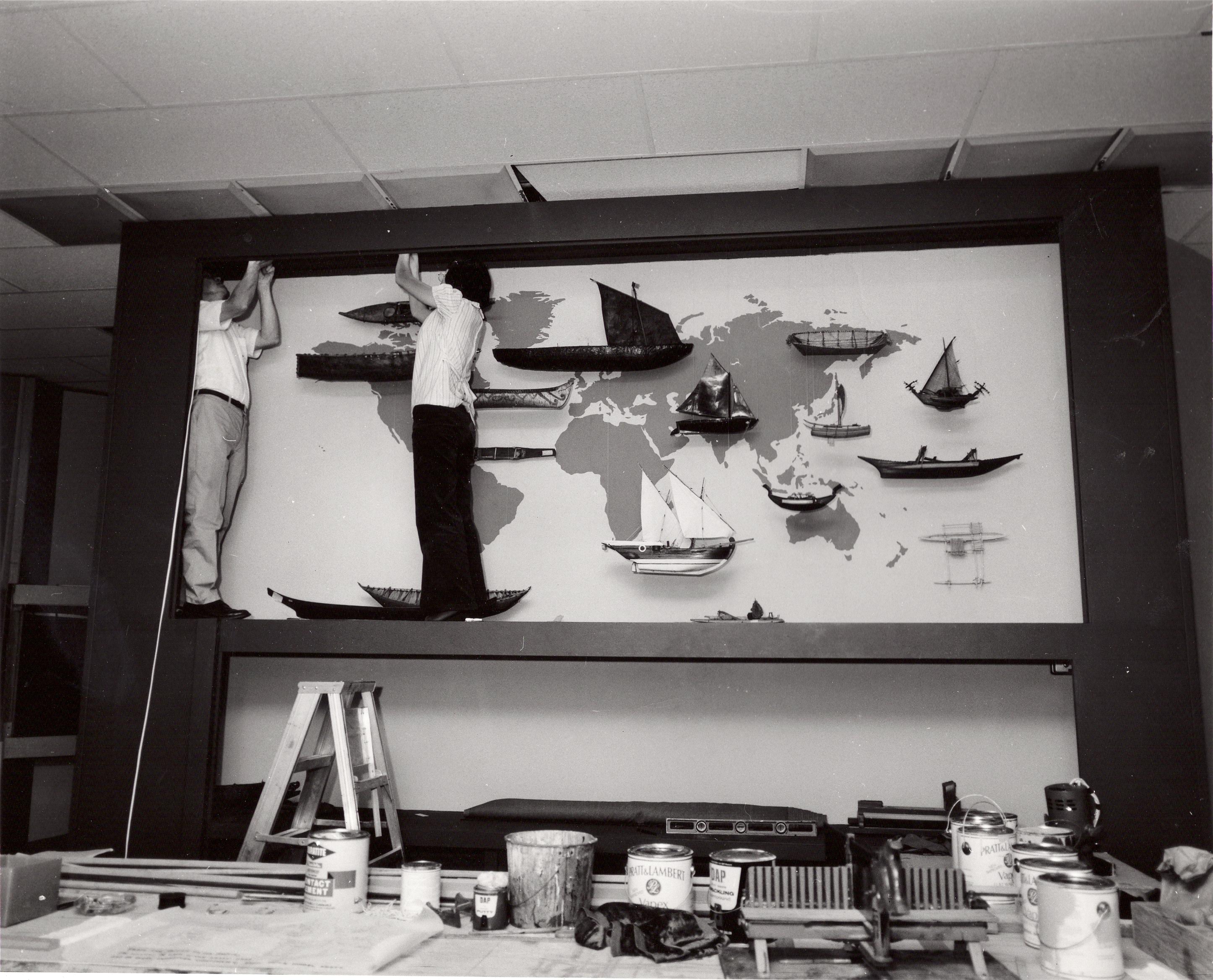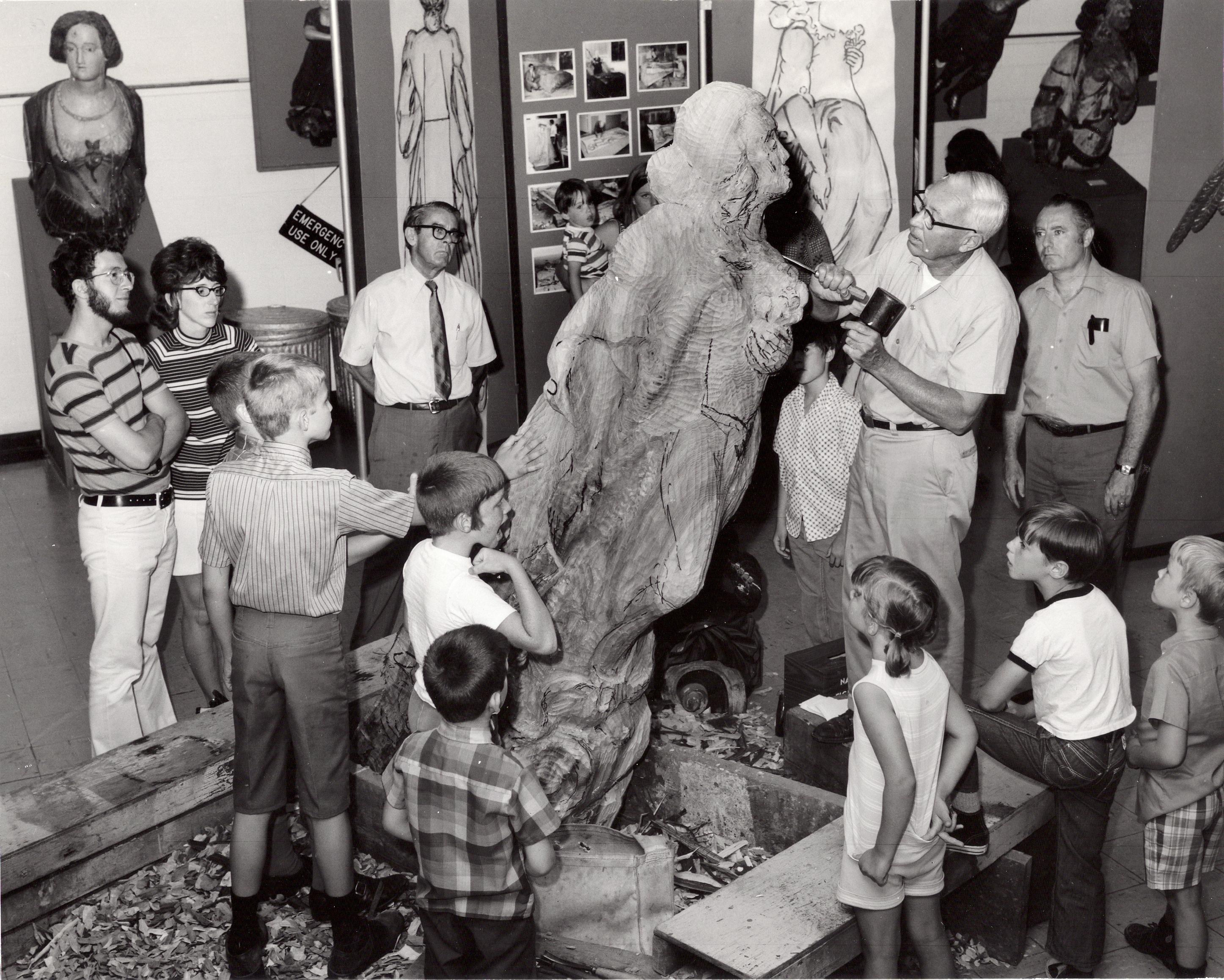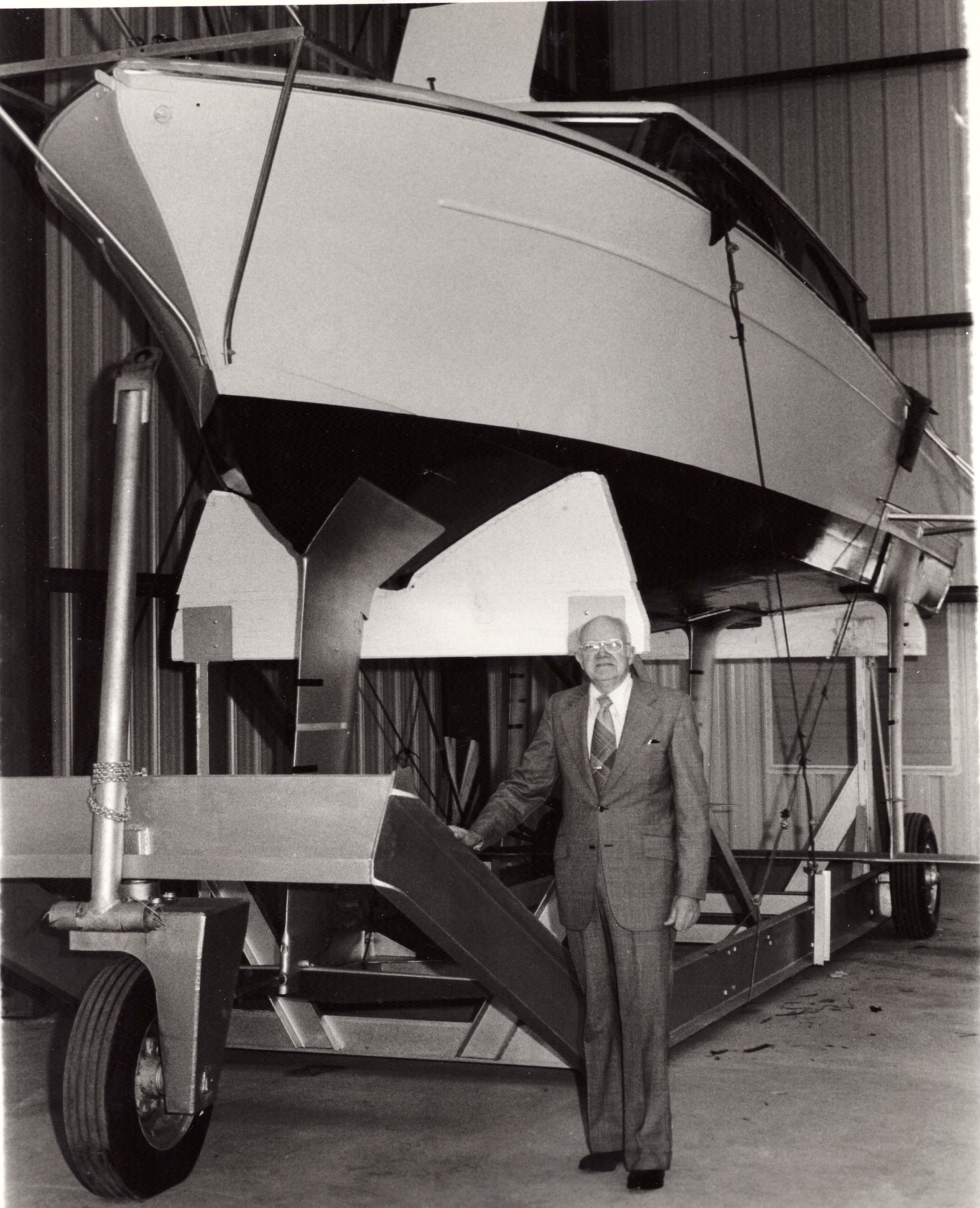
This shows the opening of the Gibbs Gallery in 1972. The celebration is being held in the Great Hall and at the opposite end of the room was where the front of the exhibition was. What’s great is that a lot of the pieces you see in the Great Hall are still on display in various places of the museum today. The eagle, the figurehead on the wall and the lighthouse lens way in the back. I believe the figurehead is in almost the exact same spot now as she was then.

This photographs show two guys putting together and exhibition featuring our model ships. I think the map on the wall is great because you can see where the each ship type would have come from. It reminds me of our International Small Craft Center and how we have flags hanging from the ceiling of the countries where we have boats from.

I have always found figureheads to be very interesting, so I was excited to find this image of staff members carving one in front of students in 1974. I’m not sure what the ultimate fate of the figurehead was, but it didn’t stay at the museum.

And here we have Richard Browne with our hydrofoil Sea Legs. Sea Legs was built in 1954-55 and was the first vessel to successfully use submerged-foil hydrofoils. As the boat gathers speed, it rises in the water to a submerged foil-depth of 3 feet (the yellow line). As it loses speed, it slowly sinks to the boat’s waterline. Pitch, roll, and attitude of the boat in flight are controlled electronically by an autopilot stabilizing system. “SEA LEGS” was capable of 30 knots when foil-borne, with a fuel consumption of 2 MPG. Richard Browne was the project engineer for the testing of craft at Chris-Craft.